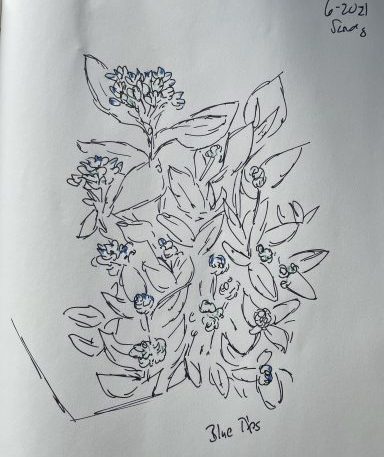I was curious. I didn’t really know what would or could happen when a group of teachers read Ralph Fletcher’s Joy Write.
I was cautious. Our school had worked so thoughtfully in implementing a curriculum that uses Teacher College Units of Study as a primary resource. Teachers had worked together. Our Literacy Coach, Jess, had led us over the past two years with incredible expertise and trust. She and our principal worked closely alongside TC staff developers to structure our PD to meet the needs of our school and our district. Our principal had taken the time to thoughtfully read Joy Write herself. She took the time to meet with me to share her thoughts and hear mine.
I was cautious, because, I didn’t want our research to undo the work that we had already started. With cautious curiosity, I shared the question – What happens when a group of teachers read Joy Write? I truly believed that the message of Joy Write and the purpose of the Units of Study could coexist in schools if there was purpose, thought, and ongoing conversations.
Stories are beginning to emerge. Stories that are validating my beliefs and opening my eyes to what can be. Here are two:
At our fourth gathering of Joy Writers, Roshawn shared this story:
“We were walking from music to our classroom. As we were walking, we all looked

out towards the river and saw the water glistening. I knew that we needed to get our Writers Notebooks and observe and write. Do the stuff we (Joy Writers) did over the summer. So the 2nd graders got their writers notebooks and sat on the steps. I told them to listen to the sounds, sketch what they see and write. All the kids, without question, sat and embraced the work. One little girl came up to me as I was studying a tree. “Aren’t you going to do it too, Mrs. Lawrence?” “I forgot my notebook.” she said. “I’ll go and get it for you!” the little girl replied without hesitation.” Clearly it was not a choice as to whether or not she would be a writer alongside her class. She sketched the tree that she had been staring at and wrote (see right):
“When we returned to the classroom, her curious class needed to know what she had written. She shared her work. Ethan piped up “You need to add that to your apple picking story!”
You see, Roshawn had been modeling narrative writing as part of their current unit of study. Clearly, Ethan saw the connection between Greenbelt writing and unit work. The Greenbelt work, according to the feedback Ethan gave Mrs. Lawrence, was informing her work as a narrative writer. Roshawn not only shared this story at Joy Writers, but reflected on the process and wrote, “they (her students) are seeing things I didn’t even see. Things tie together when you’re not looking.”
Leigh-ann and I observed this story reveal itself in her first grade classroom:

The room was pretty much silent, except for the humming of one writer, that didn’t seem tobe bothering anyone and the sound of a few first graders stretching out words. Kids were scattered all over the room. They had each made a choice. They were observing and writing. I watched JJ, who, for two weeks in a row had chosen the windowsill as his “smart spot” to work. He was observing a piece of bark. He had written “It looks like a fish.” He continued to sketch and write. I wandered around the room leaning in to the writers, watching and occasionally seeking the back story. When my eyes came back to JJ, he was sitting by the cubbies, his green writing folder opened. It was obvious he was up to something. “What are you doing?” I whispered. “Well, I wrote the word “ears” in my story and I wanted to know how to spell it in my journal.” “Good thinking.” I said, as calmly as I could. Internally I yelled, “YES!”. A first grader was teaching me. Teaching me that, yes, Writer’s Workshop and the Greenbelt can feed each-other. Despite that fact the times of day are separate, JJ knows that living like a writer means thinking like a writer all day.
In his essay “On the Virtue of Thinking Small: Reclaiming Teacher Research”, Tom Newkirk writes, “For me, research works best when it clarifies my experience as a teacher, when it helps me see better or listen better, or when it helps me think better about what I am doing.” As of right now, I couldn’t agree more. The teacher research stance has made me ever alert to the successes, the failures, the connections and the possibilities. I still don’t know where the Joy Writers research will lead us, but I know I am ready to follow the question and those of the Joy Writers.





I’m so excited that the connections are being made and that the value of this green belt writing is validated. You’ve been a model of the joy that is possible and now you have a following. Joy begets joy.
LikeLiked by 1 person
Oh, I love this so much! I also read Joy Write this summer and continue to make sure that we have at least some greenbelt writing each week. I love your noticings of the carryover the students are making!
LikeLiked by 1 person
I attended the Writing Joyfest last summer and Joy Write was one of the book giveaways. I read it in one sitting! I’ve since passed it along to other teachers, and I’m really hoping to establish a writing greenbelt in my “Lit Lab” this year. I love that your school is so thoughtfully exploring how this will go. Please write more about how this is going in your school.
LikeLiked by 1 person
I loved reading this! I’m delighted Ralph’s book has been informative and transformational. Joy Write is a gem.
LikeLiked by 1 person